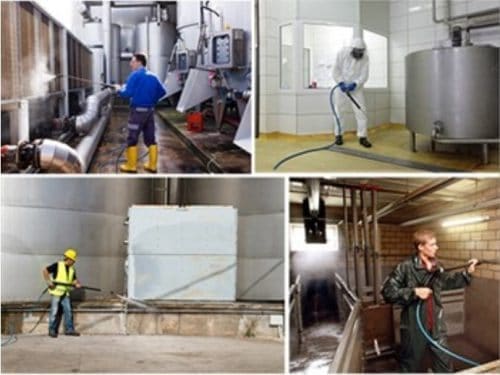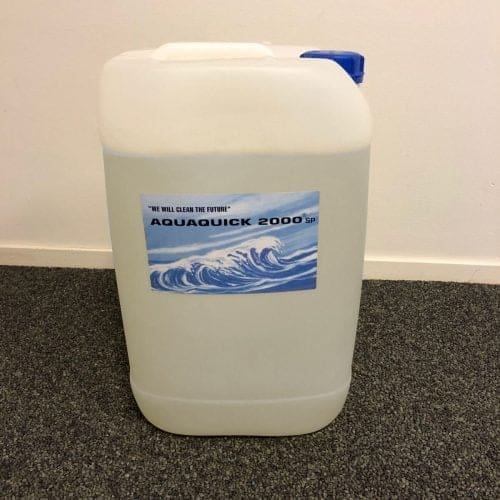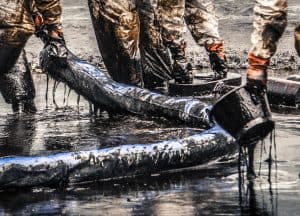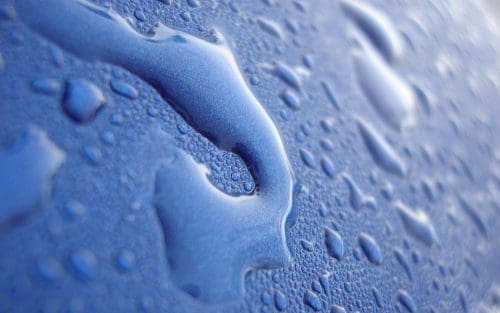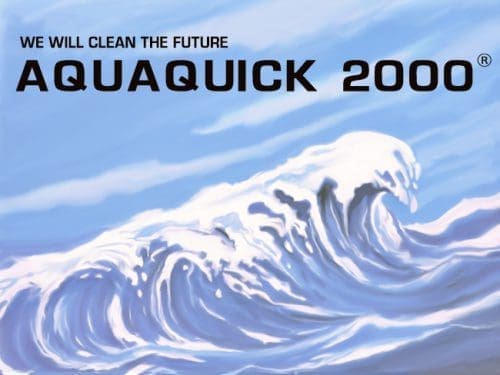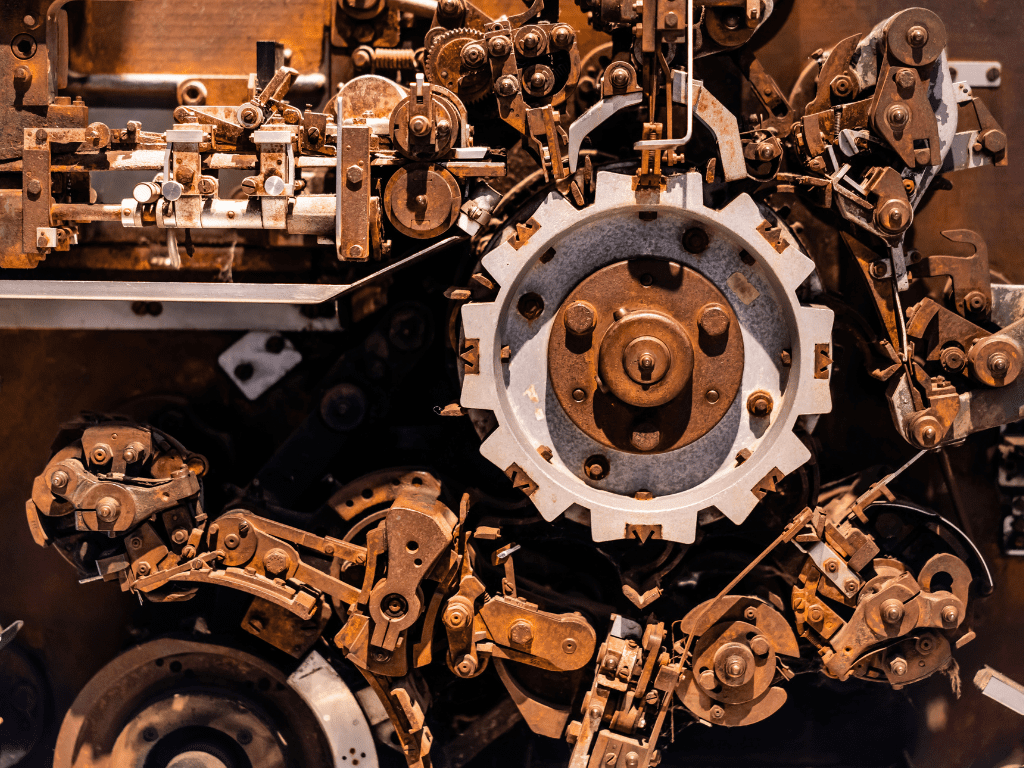Тяжелая техника - от строительной до сельскохозяйственной и горнодобывающей - работает в суровых условиях, подвергаясь сильному воздействию грязи, жира и копоти. Содержать такую технику в чистоте жизненно важно для обеспечения эффективной работы, продления срока службы и снижения вероятности поломок. Очистка не только повышает производительность, но и снижает затраты на обслуживание. В этом руководстве мы рассмотрим шаги, связанные с эффективной очисткой тяжелого оборудования, и подчеркнем, почему использование правильных продуктов, таких как AQUAQUICK 2000Это может существенно изменить ситуацию.
Почему важно очищать тяжелое оборудование?
На тяжелом оборудовании скапливаются слои грязи, масла и мусора, которые, если не принять меры, могут засорить компоненты и снизить эффективность работы. Регулярная очистка предотвращает:
- Коррозия и ржавчина: Грязь и влага могут привести к коррозии, что негативно сказывается как на внешнем виде, так и на функциональности оборудования.
- Перегрев: Мусор и жир могут засорить систему охлаждения, что приведет к перегреву.
- Опасности, связанные с эксплуатацией: Чистое оборудование улучшает видимость и повышает безопасность операторов.
- Высокие затраты на ремонт: Поддержание машины в чистоте поможет выявить износ на ранней стадии, что позволит сэкономить на дорогостоящем ремонте в будущем.
Для комплексной уборки очень важно следовать структурированному процессу с использованием правильных инструментов и чистящих средств. Давайте рассмотрим основные этапы.
Шаг 1: Подготовка к очистке
Перед началом работы убедитесь, что оборудование готово к очистке:
Безопасность превыше всего
- Выключите оборудование: Выключите оборудование и отсоедините все источники питания.
- Компоненты для охлаждения: Избегайте чистки оборудования, которое недавно использовалось, так как горячие поверхности могут плохо реагировать на некоторые чистящие средства.
- Надевайте защитные приспособления: Вооружитесь перчатками, очками и маской для защиты от мусора и чистящих средств.
Осмотрите на предмет повреждений

Осмотр перед чисткой позволит вам выявить все изношенные или поврежденные детали. Ищите:
- Утечки в гидравлических шлангах
- Сломанные компоненты
- Ослабленные гайки и болты
Выявление и устранение этих проблем до начала уборки предотвращает дальнейшие повреждения и обеспечивает более безопасный процесс уборки.
Шаг 2: Удаление грязи и мусора
Необходимые инструменты для уборки: Воздушный компрессор, щетка или воздуходувка
Используйте воздушный компрессор или воздуходувку, чтобы удалить с поверхности машины грязь и пыль. Начните с верхней части и двигайтесь вниз, уделяя особое внимание труднодоступным местам. Щетка также поможет удалить въевшуюся грязь из стыков и щелей.
Советы по эффективному удалению грязи
- Обратите внимание на ходовую часть и гусеницы, где часто скапливается мусор.
- Используйте щетки с длинными ручками, чтобы проникать в труднодоступные места, не разбирая оборудование.
Шаг 3: Нанесение обезжиривающего средства для удаления въевшейся смазки
На тяжелом оборудовании часто скапливается стойкая смазка, которую не могут удалить обычная вода и мыло. Именно в таких случаях необходимо использовать высококачественный обезжириватель, например AQUAQUICK 2000Пригодится.
Выбор правильного обезжиривателя
Обезжириватель необходим для разрушения слоев масла и смазки на тяжелом оборудовании. AQUAQUICK 2000 это мощный, экологически чистый обезжириватель, обеспечивающий исключительные возможности очистки промышленных инструментов и оборудования. Его высококонцентрированная формула эффективно растворяет трудноудаляемые вещества, возвращая оборудование в оптимальное рабочее состояние.
Как наносить обезжириватель
- Разбавляйте по мере необходимости: Проверьте инструкции производителя, чтобы определить правильную пропорцию разбавления для AQUAQUICK 2000.
- Нанесите спрей на участки, подверженные воздействию жира: Сосредоточьтесь на таких областях, как двигатель, гидравлика и гусеницы.
- Дайте время пропитаться: Дайте обезжиривателю постоять 10-15 минут, чтобы разрушить жир.
Используя такой надежный продукт, как AQUAQUICK 2000Вы сможете удалить масла, грязь и даже заправочные составы, которые влияют на работу оборудования.

Шаг 4: Мойка под давлением
Необходимые инструменты для уборки: Мойка высокого давления с регулируемой насадкой
Мойка под давлением - это быстрый и эффективный метод удаления остатков обезжиривателя и других загрязнений. Чтобы правильно промыть оборудование под давлением, выполните следующие действия:
Выбор настроек давления
- Чтобы не повредить чувствительные детали, используйте низкий или средний уровень давления.
- Настройте насадку на веерное распыление для более широкого охвата.
Этапы мойки под давлением
- Начните с самого верха: Благодаря этому вода стекает естественным образом, смывая грязь.
- Сосредоточьтесь на сильно загрязненных участках: Уделите внимание зонам с высокой проходимостью, например, ходовой части.
- Избегайте чувствительных компонентов: Остерегайтесь электрических соединений, гидравлических систем и воздушных фильтров.
После мойки под давлением дайте оборудованию высохнуть в течение нескольких минут, прежде чем переходить к следующему шагу.
Шаг 5: Детализация и точечная очистка
На тяжелом оборудовании могут быть трудновыводимые пятна, требующие более тщательной очистки. Этот процесс гарантирует, что после него не останется никаких следов.
Инструменты для точечной очистки
- Мягкие кисти: Для сложных деталей, например, вокруг двигателя и внутри вентиляционных отверстий.
- Салфетки из микрофибры: Они идеально подходят для протирания поверхностей, оставляя их чистыми и без разводов.
Используйте небольшое количество AQUAQUICK 2000 для сложных пятен, остающихся после мойки под давлением, так как эффективно справляется даже с концентрированными загрязнениями. Аккуратно очистите мягкой щеткой, а затем протрите тканью для полировки.
Шаг 6: Ополаскивание и сушка
После очистки смойте остатки чистящего средства, чтобы не осталось следов. Для ополаскивания используйте чистую воду, а затем дайте технике тщательно высохнуть.
Советы по сушке
- Используйте воздуходувку, чтобы удалить воду из щелей.
- Для крупногабаритного оборудования дайте 30-60 минут для сушки на воздухе, в зависимости от погодных условий.
Шаг 7: Нанесение защитного покрытия
Нанесение защитного покрытия помогает защитить оборудование от будущих загрязнений и коррозии. Этот шаг особенно полезен для оборудования, подвергающегося воздействию суровых внешних условий.
Варианты защитных покрытий
- Воск: Добавляет слой защиты и улучшает внешний вид металлических поверхностей.
- Антикоррозийный спрей: Идеально подходит для оборудования, хранящегося под открытым небом.
Следуйте инструкциям производителя при нанесении этих средств и избегайте чувствительных деталей, таких как окна и датчики.
Шаг 8: Окончательный осмотр и проверка технического обслуживания

После очистки проведите окончательную проверку, чтобы убедиться, что оборудование находится в оптимальном рабочем состоянии:
- Проверьте уровни жидкостей: Проверьте уровни гидравлической жидкости, охлаждающей жидкости и масла.
- Осмотрите шины и гусеницы: Проверьте, не скопился ли где-нибудь мусор, который мог остаться незамеченным.
- Осмотрите электрические компоненты: Убедитесь, что они сухие и находятся в рабочем состоянии.
Советы для Содержание тяжелого оборудования в чистоте надолго
Тяжелое оборудование нуждается в постоянном обслуживании, и соблюдение регламента может значительно сократить накопление грязи и жира.
Советы по регулярной уборке
- Очищайте после каждого использования: По возможности смывайте грязь после каждого использования, особенно на грязных или пыльных рабочих площадках.
- Регулярные проверки: Ежемесячные осмотры помогут выявить потенциальные проблемы на ранней стадии.
- Инвестируйте в качественные чистящие средства: Товары, похожие на AQUAQUICK 2000 упрощают процесс очистки, обеспечивая тщательное удаление загрязнений и продлевая срок службы оборудования.
Лучшие методы безопасной и эффективной очистки тяжелого оборудования
Очистка тяжелого оборудования может быть сложной задачей, особенно если она выполняется неправильно. Соблюдение передовых методов обеспечивает безопасность и эффективность процесса очистки.
Используйте соответствующее оборудование для работы
- Тщательно отрегулируйте мойки под давлением: Слишком сильное давление может повредить детали, а слишком слабое может оказаться неэффективным. Регулируйте давление в соответствии с поверхностью и материалом оборудования.
- Выбирайте кисти с умом: Используйте щетки с мягкой щетиной для чувствительных участков и более жесткие щетки для сильно загрязненных деталей.
- Учитывайте экологические нормы: Используйте биоразлагаемые чистящие средства, например AQUAQUICK 2000 чтобы свести к минимуму воздействие на окружающую среду, поскольку этот очиститель эффективен и в то же время безопасен для многих областей применения.
Практика экологической ответственности
При очистке тяжелого оборудования могут выделяться загрязняющие вещества, поэтому очень важно соблюдать правила экологической безопасности:
- Содержите и удаляйте сточные воды: Установите барьеры для удержания сточных вод и обеспечьте их надлежащую утилизацию в соответствии с местными экологическими нормами.
- Выбирайте экологически чистые продукты: Например, AQUAQUICK 2000 разработан как экологически чистый продукт, что делает его подходящим для отраслей, стремящихся сократить воздействие на окружающую среду.
Преимущества использования AQUAQUICK 2000 для очистки тяжелого оборудования
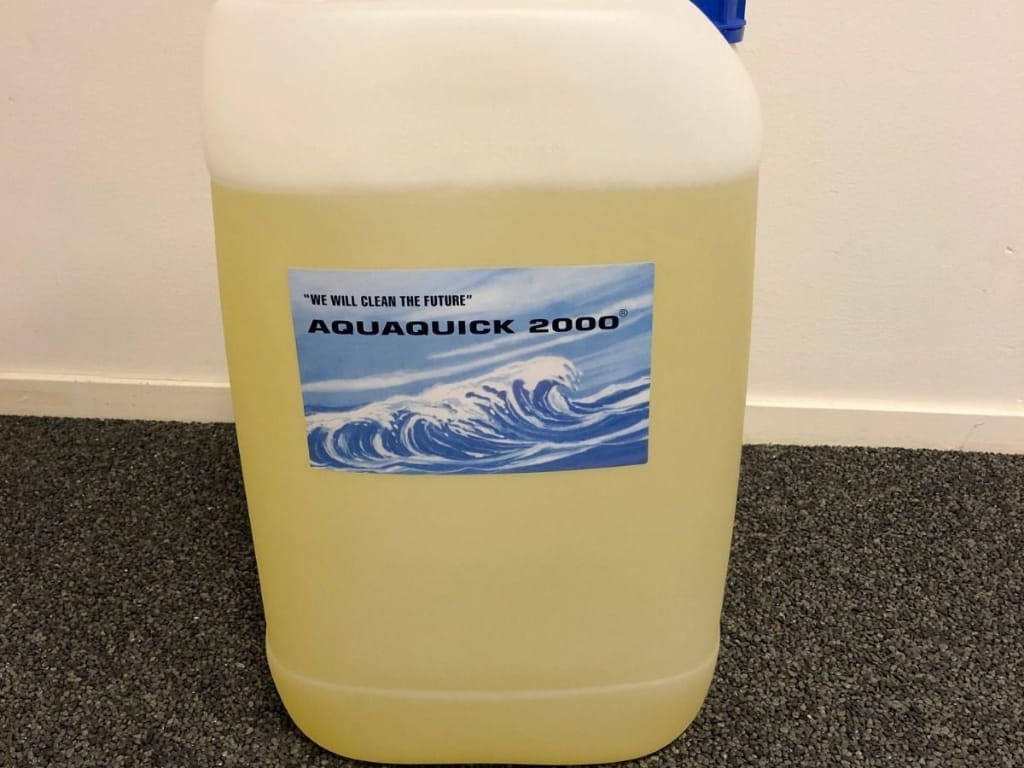
AQUAQUICK 2000 выделяется как универсальное и мощное чистящее средство для широкого спектра промышленных применений. Вот почему он является лучшим выбором для очистки тяжелого оборудования:
- Высокая концентрация для эффективности: Концентрированная формула AQUAQUICK 2000 означает, что небольшое количество средства может покрыть большую площадь, что делает его экономичным выбором.
- Мощное обезжиривающее действие: Его уникальный состав эффективно растворяет смазку, масло и грязь, которые скапливаются на тяжелом оборудовании, обеспечивая поддержание техники в оптимальном рабочем состоянии.
- Безопасен для различных отраслей промышленности: AQUAQUICK 2000 используется в таких отраслях, как аэрокосмическая, военная и нефтедобывающая, где чистота оборудования имеет решающее значение для производительности.
- Экологически чистое решение: Благодаря своей биоразлагаемой природе он не только справляется с загрязнениями, но и бережно относится к окружающей среде, что делает его подходящим для компаний, ориентированных на экологическую безопасность.
Для тех, кто обслуживает тяжелую технику, AQUAQUICK 2000 обеспечивает эффективное решение для очистки, которое справляется даже с самыми сложными загрязнениями без ущерба для долговечности оборудования и окружающей среды.
Часто задаваемые вопросы о чистке тяжелого оборудования
В: Как часто следует чистить тяжелое оборудование?
О: Это зависит от условий эксплуатации оборудования и окружающей среды. Для оборудования, интенсивно используемого в грязной среде, рекомендуется чистка раз в неделю или раз в две недели, в то время как оборудование, используемое реже, может нуждаться в ежемесячной чистке.
В: Можно ли использовать бытовые чистящие средства для тяжелого оборудования?
О: Бытовые чистящие средства обычно недостаточно сильны для тяжелой техники и могут оставлять следы. Чистящие средства промышленного класса, такие как AQUAQUICK 2000 разработаны специально для работы с большим количеством жира и грязи на тяжелом оборудовании.
В: Безопасно ли использовать мойки высокого давления для всех частей оборудования?
О: Хотя мойки высокого давления эффективны, их следует использовать осторожно, особенно вблизи чувствительных деталей, таких как электрические компоненты и гидравлические системы. Отрегулируйте давление и используйте веерные насадки, чтобы уменьшить прямое воздействие на деликатные участки.
В: Каковы преимущества использования экологически чистого очистителя для тяжелой техники?
О: Экологически чистые чистящие средства минимизируют воздействие на окружающую среду, соответствуют нормативным стандартам и снижают риски для операторов. AQUAQUICK 2000, например, является биоразлагаемым, что делает его ответственным выбором для отраслей, стремящихся поддерживать экологичность производства.
Заключение
Содержание тяжелого оборудования в чистоте необходимо для безопасной работы, долговечности и эффективности. Соблюдение структурированного процесса очистки и использование надежных продуктов, таких как AQUAQUICK 2000 гарантирует, что ваше оборудование останется в отличном состоянии. Обладает сильным обезжиривающим действием, высокой концентрацией для экономичности и экологически безопасным составом, AQUAQUICK 2000 это идеальное решение для различных отраслей промышленности, где используется тяжелое оборудование.
Соблюдая эти правила и рекомендации по очистке, вы сможете повысить производительность оборудования и избежать дорогостоящего ремонта. Регулярная очистка не только сохраняет внешний вид оборудования, но и поддерживает его оптимальное функционирование в сложных условиях.



